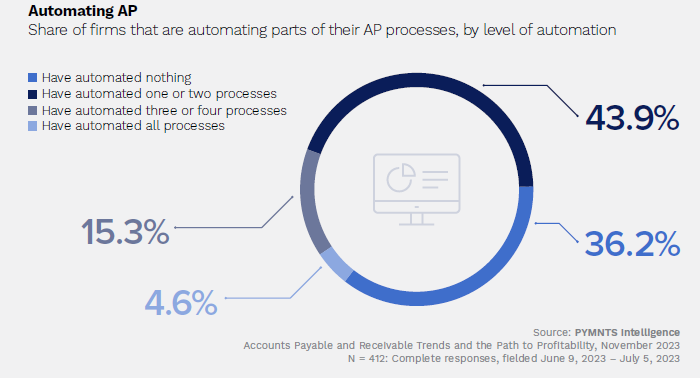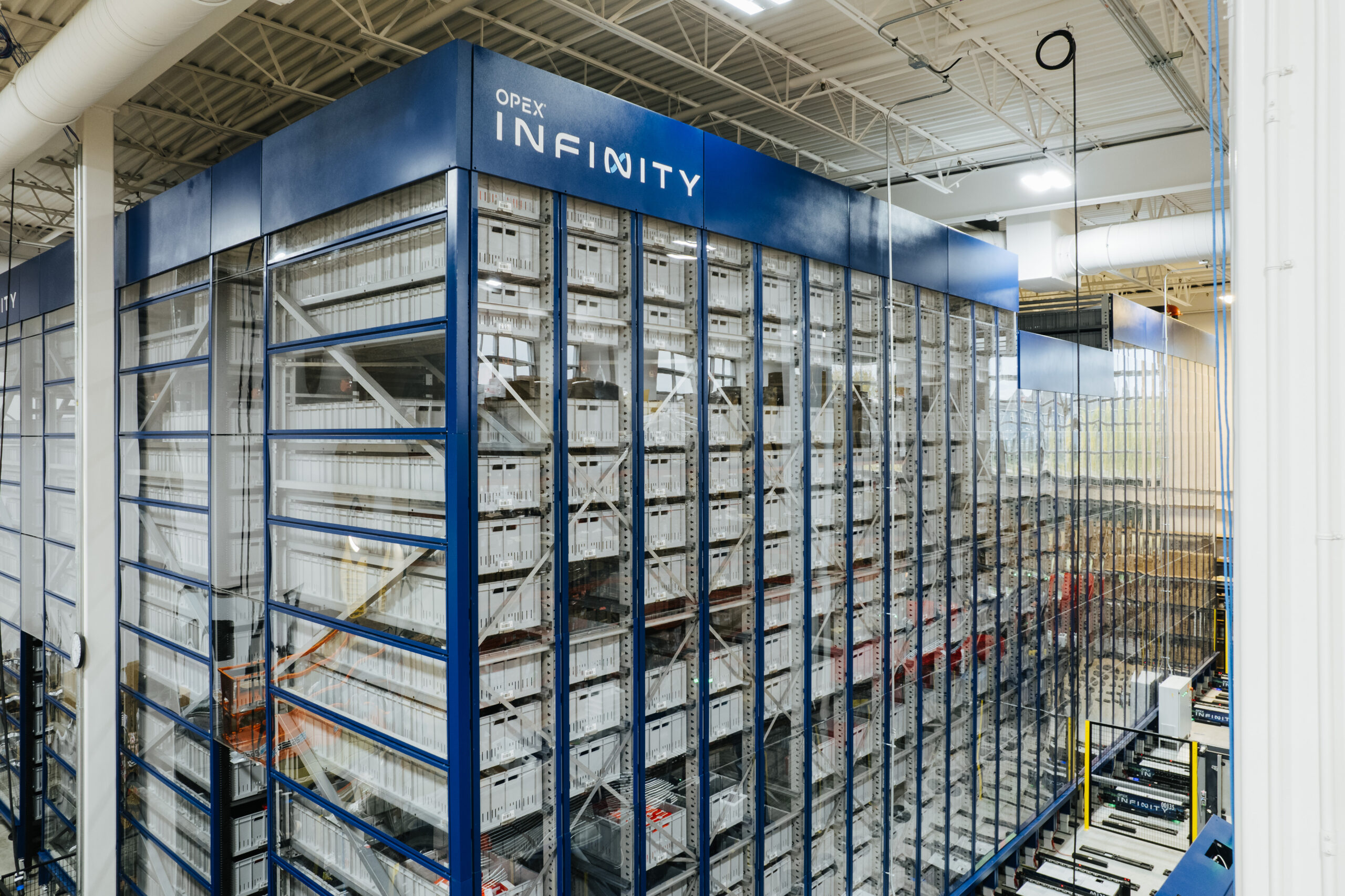Automation and artificial intelligence (AI) have become essential tools in the business-to-business (B2B) landscape, transforming various aspects of financial operations and payment processes.
For instance, the digitization and automation of payments have proven key to improving working capital transparency and streamlining financial processes, helping businesses navigate economic challenges. This article explores the impact of automation and AI in the B2B sector, highlighting the benefits and opportunities advanced technologies are bringing to businesses, small and large.
Automation Enhances AP/AR Workflow Transparency
In a recently published report, “Why CFOs Recognize the Need to Automate AP/AR Workflows,” PYMNTS examined the adoption of specialized AP/AR automation software and how it impacts firms’ AP/AR workflow efficiency based on a survey of 100 CFOs at U.S.-based firms generating $250 million or more in annual revenue.
Data from the joint PYMNTS-Corcentric study shows that 93% of CFOs noted reduced days of delay in how invoices are tracked when automating AP processes, as well as the significant reduction in friction in the source-to-pay cycle.
Automation also offers benefits such as enhanced fraud prevention, with CFOs crediting those applications with reducing delays in payment and invoice tracking, per the report.
However, while CFOs have prioritized investments that automate fraud and risk management, there is a need to expand automation efforts across the entire AP/AR workflow to further improve efficiency, the study stated.
AI Gives CFOs Enhanced Forecasting Capabilities
According to Jarrett Bruhn, managing director and head of data and AI in Global Transaction Services at Bank of America, these advanced technologies are akin to an “Industrial Revolution 4.0” and are equipping treasurers with new and innovative ways to do business.
“When you think of what a treasurer does, trying to find operational and cost efficiencies, these tools and technologies fundamentally change how they can do their daily job,” Bruhn told PYMNTS earlier this year.
Moreover, by embracing modern digital solutions that harness embedded AI, such as Bank of America’s CashPro Forecasting, leaders experience improved precision and gain the ability to simulate various “shock” scenarios to better comprehend the repercussions of unforeseen events on their cash flows.
“You can shock sales up and down, shock payroll up and down — same with interest rates and foreign exchange — and by manipulating this model you can end up with a forecast that has all the ingredients necessary for your industry and your company,” Bruhn noted of the limitless nature of AI-driven model flexibility.
Gen AI Enhances Payments Processing, Fraud Prevention
As PYMNTS reported, about 40% of business executives have acknowledged the urgent need to adopt generative artificial intelligence (Gen AI), a market poised to grow to $1.3 trillion by 2032, up from $40 billion in 2022.
And its benefits are countless. Apart from automation of repetitive, manual-intensive tasks and operations, areas where businesses stand to benefit significantly from harnessing Gen AI include payments processing, smart chatbots and virtual assistants, recommendation systems and ultra-personalization, identification and prevention of fraudulent activities and natural language processing (NLP) for customer support and document exploration.
“Generative AI can essentially retrain the old AI and machine learning models,” Tom Randklev, global head of product at payment orchestration platform Cellpoint Digital, told PYMNTS in May, adding that he sees a “really interesting trajectory [for AI] when it comes to payments.”
That said, experts like Constructor CEO and Co-Founder Eli Finkelshteyn have pointed out the need for companies to thoroughly assess Gen AI’s impact and substantiate its actual value to ensure that it is driving the anticipated key performance indicators.
This scrutiny, he told PYMNTS last month, is what will differentiate generative AI from “being a hype cycle that eventually ends, to … being something that leads to actual, very real benefits across the marketplace.”










